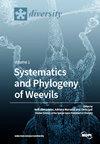柱头蝗(足蝗科,哺乳动物)的分子系统发育:一个具有复杂历史的小属
IF 2.1
3区 生物学
Q2 BIODIVERSITY CONSERVATION
引用次数: 0
摘要
利用线粒体cytb基因和几个核基因片段对Stylodipus属三趾跳鼠进行了广泛的系统发育/系统地理研究。该属被认为包括三种:S. telum(中亚西部,欧洲东南部),S. andrewsi(中亚东部)和S. sungorus(准噶尔盆地)。我们的数据支持了S. andrewsi和其他类群形成的S. telum物种群的二分法。在后者中,mtDNA和核位点都表明了S. telum和S. birulae谱系(哈萨克斯坦东北部的Zaisan凹陷)之间的物种水平差异,后者以前被认为是S. telum的亚种,现在被提升为完整的物种。根据核数据,sungorus被恢复为S. birulae的近亲,但在线粒体树中与S. telum聚在一起。后一个分类群是最多变的,包括两个密切相关的东部和西部亚系,由伏尔加-乌拉尔砂分隔,由一个更不同的s.t. karelini谱系(哈萨克斯坦东部)连接。观察到的有丝分裂核不一致可能是由于S. sungorus和S. t. karelini杂交导致的mtDNA渗入造成的,这突出了网状结构在双足科进化中的重要作用。本文章由计算机程序翻译,如有差异,请以英文原文为准。
A Molecular Phylogeny of Stylodipus (Dipodidae, Mammalia): A Small Genus with a Complex History
A range-wide phylogenetic/phylogeographic study of the three-toed jerboas of the genus Stylodipus is conducted using the mitochondrial cytb gene and fragments of several nuclear genes. The genus has been believed to include three species: S. telum (W Central Asia, SE Europe), S. andrewsi (E Central Asia), and S. sungorus (Dzungar basin). Our data support the dichotomy between S. andrewsi and the other taxa forming S. telum species group. Within the latter, both mtDNA and nuclear loci indicate a species-level divergence between S. telum and the S. t. birulae lineage (Zaisan depression, NE Kazakhstan), previously considered a subspecies of S. telum and here elevated to full species. S. sungorus is recovered as a close sister group to S. birulae on the basis of nuclear data but clustered with S. telum in the mitochondrial tree. The latter taxon is the most variable and includes two closely related eastern and western sublineages, separated by the Volga-Ural sands and joined by a more divergent S. t. karelini lineage (E Kazakhstan). The observed mitonuclear discordance is hypothesized to occur due to mtDNA introgression resulting from hybridization between S. sungorus and S. t. karelini, which highlights the important role of reticulations in the evolution of Dipodidae.
求助全文
通过发布文献求助,成功后即可免费获取论文全文。
去求助
来源期刊

Diversity-Basel
Environmental Science-Ecological Modeling
CiteScore
3.40
自引率
12.50%
发文量
925
审稿时长
11 weeks
期刊介绍:
Diversity (ISSN 1424-2818) is an international and interdisciplinary journal of science concerning diversity concept and application, diversity assessment and diversity preservation. It is focused on organismic and molecular diversity. It publishes reviews, regular research papers and short notes in the regular issues. Related news and announcements are also published. Our aim is to encourage scientists to publish their experimental and theoretical results in as much detail as possible. Therefore, there is no restriction on the length of the papers. Full experimental details must be provided so that the results can be reproduced.
 求助内容:
求助内容: 应助结果提醒方式:
应助结果提醒方式:


